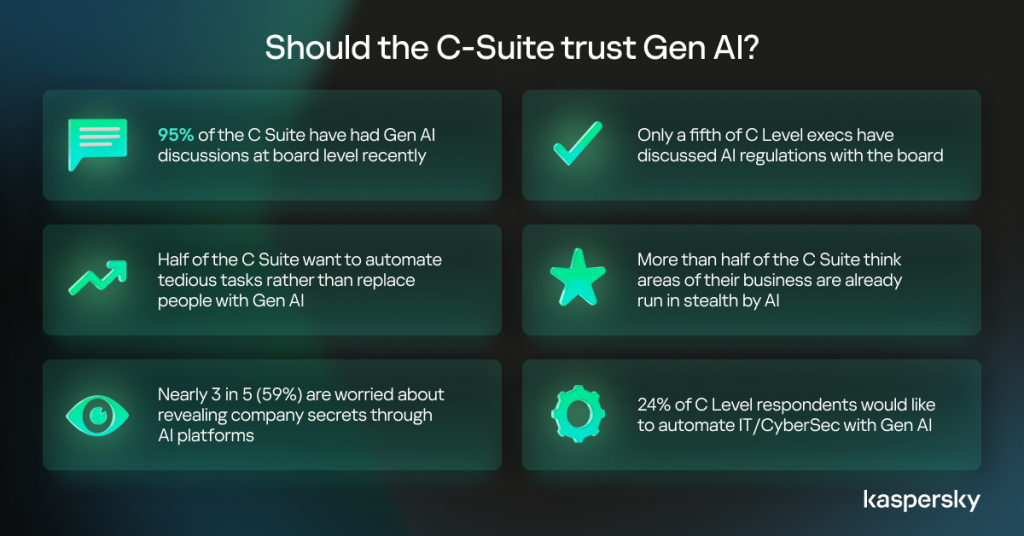Artificial Intelligence has become something of a buzz-word of late, with start-ups across the globe jumping on the A.I train, in the hopes of making the next ChatGPT. But whilst the scramble to create the next big-thing rolls on, employers are looking at how the current crop of tools will be used (and possibly abused) in their businesses.
Are businesses sleep-walking into a cyber-security nightmare, or are concerns around the technology overblown? Recently we conducted some research, asking business leaders their thoughts on generative A.I and its use in their businesses.
A real concern?
After A.I is not a security risk in the same sense as an outdated server or endpoint. To understand this properly, we first have to understand how generative A.I works.
In order to work effectively, AI relies on input from the user. From this, the tool learns and refines its outputs. Whilst there are many advantages from the use of gen A.I, the correct handling of highly sensitive intellectual property or data in a business context requires careful consideration.
So, the potential is that staff misuse AI tools and share sensitive data or intellectual property with a third-party. Outside of the fact that you could run into legal problems such as GDPR, you could end up in a position where your business is sharing private data with a tool that may use to become smarter. So, broadly speaking, the concern stems from privacy and data rather than more “traditional” security concerns that IT teams are familiar with.

Two-sides to every coin
However, with this all said many business leaders already think that generative A.I is in the building – indeed, some are even using it themselves – our research shows that around a quarter of business leaders such as CEO’s (26%) are already using tools such as ChatGPT themselves.
Whilst many of those surveyed believed that Gen A.I is already in their business, most aren’t planning on doing anything about it. In fact, just over a quarter of those surveyed are actually using AI themselves for day to day activities.
What’s the solution?
So whilst we wax lyrical about the concerns of Gen A.I, what pragmatic solutions are there, so businesses can continue using tools such as this, whilst mitigating the risks.
To understand this, we need to go back a little bit in time. Ten years ago, BYOD, or Bring Your Own Device was hailed as a game-changer for businesses – allowing them to reduce costs & maintenance. However, businesses quickly realized that there were several issues that BYOD caused, including not having a complete breakdown of the devices on their network and additional issues around data privacy and security. As a result, BYOD in many businesses was either restricted or blocked, or staff had to ensure IT teams had visibility over devices.
So, what does this have to do with Gen A.I? Well, as John C. Maxwell once said: “You can’t trust what you don’t understand”. Business leaders need to learn more about the pros and cons of generative A.I to see if it truly deserves a place in their business.
To learn more about our findings, you can read the whole report here.
 business security
business security

 Tips
Tips